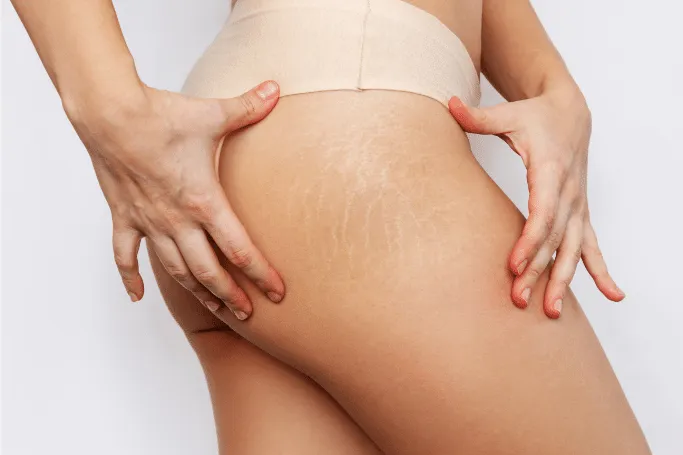Approved Medical Treatments for Hyperpigmentation

There are more solutions than ever before for getting rid of that unimportant but annoying hyperpigmentation if you're concerned with dark patches on your skin.
What is hyperpigmentation exactly? It's any area of skin that appears darker than your natural skin tone because to an overproduction of the brown pigment melanin. The Cleveland Clinic states that liver spots (also known as age spots) and sunspots are examples of hyperpigmentation.
Four things that can result in hyperpigmentation
According to the Cleveland Clinic, these are the most common causes of hyperpigmentation — and they can affect people of all skin tones to varying degrees.
1. Inflammation
Inflammation can be triggered by skin trauma, including acne, eczema, bug bites, wounds, and scrapes. It can also be triggered by scratching or friction from, say, vigorous rubbing. A black area may remain after the injury has healed due to inflammation, which can activate pigment-producing cells. Post-inflammatory hyperpigmentation is a common term used to describe a condition where inflammation is the root cause of discolouration.
2. Sun Exposure
The Mayo Clinic claims that the sun's UV rays increase melanin formation in an effort to protect your skin from harm. You get a tan because of the increased melanin. However, excessive or regular sun exposure might result in the development of black sunspots. According to the American Society for Dermatologic Surgery, sun-exposed skin may acquire precancerous lesions that resemble sunspots even if sunspots are not
cancerous. It's crucial to have your skin examined by a dermatologist once a year for this reason.
Melasma
Melasma, sometimes known as the "mask of pregnancy," is characterized by brown patches that typically appear in pregnant women and in women with variable hormone levels. Although it can happen in men as well, this kind of hyperpigmentation most frequently affects females. According to doctors at the American Osteopathic College of Dermatology, it has also been connected to the use of oral contraceptives, and it is thought to be brought on by a mix of hormonal changes, heredity, and sun exposure (AOCD). The Cleveland Clinic further states that additional hormone drugs used for birth control and menopause symptoms, in add
ition to the other classes of drugs covered below, may result in melasma.
4. Medical Conditions or Medication
Addison's disease, an adrenal gland illness that can increase melanin production, can result in hyperpigmentation. According to a book released by StatPearls in July 2022, a number of medications, including antibiotics, nonsteroidal anti-inflammatory medicines (NSAIDs), and antimalarials, may all raise the risk of hyperpigmentation. According to the advocacy organization Cancer Connect, some chemotherapy medications might also result in transient hyperpigmentation. As new skin cells replace dead ones, chemotherapy-related dark patches often go away 10 to 12 weeks after treatment is finished.
The Best Remedies for Present Hyperpigmentation and Future Prevention
1. Keep Skin Moist to Promote Cell Replacement
While lightening the dark spots is your main objective while treating hyperpigmentation, an efficient over-the-counter (OTC) moisturizer should also include components that are good for the skin overall. The author of Beyond Beautiful: Using the Power of Your Mind and Aesthetic Breakthroughs to Look Naturally Young and Radiant, Doris J. Day, MD, says that in addition to addressing pigment issues, a good product will contain moisturizing ingredients like glycerin or hyaluronic acid, and possibly even retinol to boost cell turnover. These dormant components "enable the active brighteners to function more efficiently."
According to the University of Tennessee Medical Center, a good moisturizer can also repair the skin's lipid, or fat, barrier, ensuring that new skin cells that are replacing old ones stay healthy as they rise to the surface.
2. Keep Your Hands Away From Blackheads, Bites, and Other Injuries
No matter how enticing it might be to squeeze a stubborn blackhead or itch a mosquito bite, keep in mind your mother's advice to "Don't pick!" and heed it. According to Jeanine Downie, MD, a dermatologist and the director of Image Dermatology in Montclair, New Jersey, "scratching and picking at a place will only worsen the inflammation that's responsible for skin discoloration." It will seem worse later if you make more changes to it now.
Examine your options for OTC whitening
Hyperpigmentation can be removed more easily the earlier it is treated. According to Dr. Downie, the pigment in brown patches may eventually penetrate deeper layers of skin.
Azelaic and glycolic acids, vitamin C, and retinoids are spot-eliminating components to search for in over-the-counter remedies, advises the American Academy of Dermatology Association (AAD).
Ni'Kita Wilson, a cosmetic chemist in New York City, advises using treatments that contain ingredients like vitamin C, licorice root, and kojic acid to reduce hyperpigmentation because they block tyrosinase, an enzyme that produces skin-darkening melanin.
The AAD strongly advises against applying liquid bleach to your skin despite the "bleaching" effects of many of these over-the-counter ingredients on dark spots, and instead suggests sticking with U.S.-made skin lightening products because some imported skin lightening products have been found to be contaminated with mercury, steroids, and other harmful ingredients.
4. Consider a prescription for persistent skin discoloration
It's time to bring in the experts if over-the-counter medicines aren't working. Because hydroquinone suppresses the synthesis of pigment, dermatologists view products containing it as the gold standard for lightening black spots, whether used alone or in combination with other lighteners. According to the US, they are available with a prescription. Drug Enforcement Agency (FDA). Have your dermatologist closely monitor hydroquinone treatment, Downie advises, because in high concentrations hydroquinone can cause sun sensitivity and may bleach the skin. "It's our go-to," says Downie, "because unlike many of the ingredients in OTC products, it almost always works at eliminating hyperpigmentation."
The AOCD warns that in addition to hydroquinone, your dermatologist might also recommend tretinoin, a kind of synthetic vitamin A, or topical cortisone cream.
5. Take Sunscreen to Prevent Skin Cancer
Applying a broad-spectrum sunscreen with a sun protection factor (SPF) of 30 or more attentively every day, even on cloudy or chilly days, is the most efficient strategy to stop sun-induced discolouration. According to Dr. Day, UV rays just put the pigment into overdrive, making dark patches darker. "You must apply sunscreen to exposed regions every day."
SPF solely describes defense against UVB short-wave radiation. The Centers for Disease Control and Prevention (CDC) suggests using a product with Mexoryl, Parsol 1789, titanium dioxide, zinc oxide, or avobenzone if you want to protect against UVA long-wave rays as well.
The AAD also advises staying indoors between 10 a.m. and noon. and around 2 PM, when the sun is at its heaviest. To shield your head, as well as your face, ears, and neck, you can also wear a hat with a wide brim.
Consult a dermatologist about high-tech alternatives
If topical remedies aren't working, you might want to discuss more aggressive methods with your dermatologist to get rid of discoloration, such as chemical peels, microdermabrasion, or dermabrasion, or, according to the International Association for Physicians in Aesthetic Medicine, a laser resurfacing procedure. Important information: According to a review published in March 2017 in the International Journal of Women's Dermatology, lasers are not regarded first-line therapies for melasma because they have not been shown to reduce excessive melanin production.
7. Additional Steps to Avoid or Reduce Future Damage
You can take additional preventive steps to reduce the onset of future dark spots in addition to therapy and sun protection. Avoid irritated or burning skin care products because these might exacerbate or even start hyperpigmentation. Additionally, guard against additional typical skin-darkening factors by utilizing acne medicine to treat zits and bug spray to ward against bites.
To Sum Up:
Your dermatologist can assist you in determining the origin of your hyperpigmentation and will collaborate with you to create an effective treatment regimen.
No matter what course of action you finally take, it's critical to safeguard your skin from additional UV damage and hyperpigmentation.
Sunscreen should always be worn. Even on cloudy days, you should use sunscreen every morning! — and reapply as necessary all day long. Use sunscreen that has an SPF of 30 or higher.
Related posts




